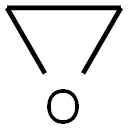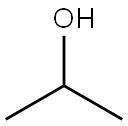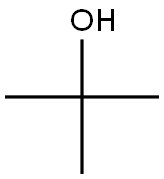Chemical Properties
colourless liquid
Uses
2-Isopropoxyethanol was used to study the products of the gas-phase reactions of OH radical with n-butyl methyl ether and 2-isopropoxyethanol in the presence of NO. 2-Isopropoxyethanol was used to develop methodology for evaluating electromagnetic sensor performance in nonrelaxing and nonconducting (e.g., sandy soil) media
Uses
Solvent in latex paints, lacquers, and
other coatings, resins, coalescing aids, and coupling
solvents
Uses
Ethylene glycol monoisopropyl ether (EGIE) is used as a solvent for resins, dyes, and cellulose esters, and in coatings..
General Description
A clear liquid. Density 0.903 g / cm3. Flash point 114°F. An irritant.
Air & Water Reactions
Flammable. Oxidizes in air to form unstable peroxides that may explode spontaneously [Bretherick, 1979 p.151-154, 164]. Water soluble .
Reactivity Profile
2-ISOPROPOXYETHANOL acts both as an alcohol and ether. May react violently with strong oxidizing agents. May generate flammable and/or toxic gases with alkali metals, nitrides, and other strong reducing agents. May initiate the polymerization of isocyanates and epoxides.
Hazard
Combustible liquid with flash p 49C. Toxic
by skin absorption.
Health Hazard
EGIE shows low toxicity from inhalation, ingestion, and skin absorption. The toxic symptomsaresimilartothoseproducedbythe butyl ether of the ethylene glycol. The effects noted in rats from exposure to 1000 ppm for 6 hours were hemoglobinuria, anemia, and lung congestion (Gage 1970). Other effectsobservedwereincreasesintheosmotic fragility of the red blood cells. Such effects were manifested at EGIE concentrations of >200 ppm. A 4-hour exposure to 4000 ppm was lethal to rats. In human exposure to this compound can result in anemia
LD50 value, oral (rats): 5660 mg/kg
No testicular toxicity was observed in rats from a single exposure to 3500 ppm of EGIE in air (Doe 1984)..
Health Hazard
May be harmful by inhalation, ingestion or skin absorption. May cause skin and eye irritation.
Fire Hazard
Special Hazards of Combustion Products: Emits toxic fumes when heated upon decomposition.
Waste Disposal
Chemical incineration is the most suitable method of destruction. Drain disposal may be done for small amounts of EGIE.











